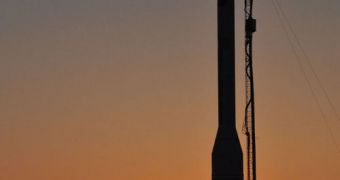Officials at the American space agency announce that their newest satellite, the Glory spacecraft, is finally ready to launch this Friday, March 4, after nearly a week of delays caused by technical issues.
This particular satellite will be used for climate and aerosol monitoring, and is expected to provide climate scientists with a new understanding of the chemical cycles and transfer going on in Earth's atmosphere.
An Orbital Sciences Corporation-built Taurus XL delivery system will carry Glory to orbit at 2:09 am PST (1009 GMT) Friday morning. Launch is set to take place at the Vandenberg Air Force Base (VAFB), in California.
Originally, the spacecraft was supposed to take off on February 23, but NASA mission controllers were forced to abort the countdown after reading instruments indicated a malfunction in the carrier rocket.
At the time, a computer onboard the Taurus XL rocket was sending erroneous information to the control tower, displaying parameters about its status that were incorrect, Space reports.
The attempt was called off entirely later on, and engineers spent the subsequent week trying to fix to glitch. If was only now that officials at the space agency were convinced the issue has been fixed.
In a brief statement released this week, NASA officials said that the problem has now been fixed, and that they green-lighted the new launch attempt. The Glory spacecraft is worth $424 million.
In addition to the satellite, the rocket also carried three Cubesats microsatellites, which are being launched as part of the space agency's Educational Launch of Nanosatellites program.
All of the smaller spacecraft were constructed by universities or students, and won the chance of being sent to space aboard a NASA flight. They will also be deployed to orbit after Glory is released.
The largest payload on the OSC rocket is meant to fulfill two functions at once – keep an eye on the activity of solar radiation with one instrument, and monitor the movement of atmospheric aerosols with the other.
The latter will help experts determine precisely what amount of these particles is being produced by natural sources such as volcanoes and deserts, and how much from anthropogenic sources like pollution.
NASA says that the 1,157-pound (525-kilogram) spacecraft will orbit the planet at an altitude of about 438 miles (705 kilometers), and that its mission is scheduled to last for about three years.

 14 DAY TRIAL //
14 DAY TRIAL //